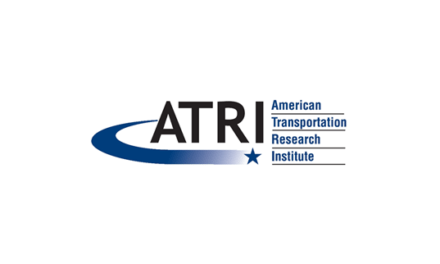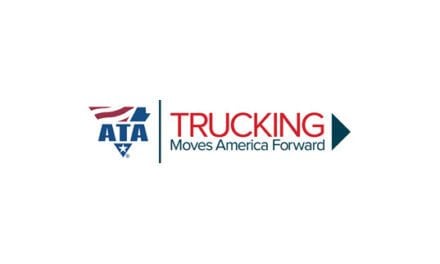One of the mistakes young professionals often make in their career planning and business activity is to confuse function with output (product or service). A farmer and a restaurant owner are both in the “food business” basis output, but the activities are not even close. So when I hear a young person say he or she does not like the “energy business” or desires to be in the “social media business” try and get them to narrow their discussion to one of function and not output, because these nine functions are crucial to all business activity and output. Having capabilities and understanding in each of these areas (and deep skills in some) as well as understanding your passion, strengths and weaknesses in each of these areas is crucial to long-term success.
These nine areas are:
- Strategy and Analysis
- Asset Acquisition and Disposition
- Human Resources
- Operations
- Financial and Activity Reporting
- Organizational Governance
- Finance and Balance Sheet Construction
- Risk and Regulatory Management
- Brand Development
Strategy and Analysis
As I gain more experience I have come to realize that strategy and a great understanding of the landscape where you must compete are more important than most other factors of business activity.
Whether you proscribe to what Warren Buffet has said: “I would rather be a mediocre performer in an outstanding business than an outstanding performer in a bad industry.” or what Dwight Eisenhower believed: “Wars are won or lost before the first shot is fired.” strategy and the accompanying analytics of big data have never been more critical. Technology, demographics, and government regulations ensure that at least an annual strategic and competitive review is an absolute necessity. Stan Sheetz who runs a great retail chain said it best: “We come to work every day in an attempt to create the new model that will make our existing activity obsolete.” More businesses have failed because of a slow drift away from the right strategy and not understanding the change happening around them, than because of the more sensational operational failure or balance sheet decay. K-Mart and Sears were dead long before they realized and it was reflected in their stock price.
Assets Acquisition and Disposition
Assets along with human capital are the obvious tools of business. Acquiring, disposing and renovating are activities that must be done regularly and unemotionally. A wise investor once said: “Fall in love with your family and friends, not your assets.” A classic business mistake is to not “cull the heard” or to minimize capital expenditures in the pursuit of current cash flow. A great new book The Long And Short Of It explains that programmed death is essential for a species evolution and survival. So it is with assets and activities. Deciding what to sell or cease is as critical as deciding what to buy or begin.
Human Resources
It may seem trite or too touchy freely but human resources is as critical to business success as strategy formation, asset optimization and operational efficiency. Very often the difference between a great performing company and an average one is the quality of the people, especially the ones facing the customers and counter-parties and not the c-suite executives. Too often HR is viewed as a processing center and clerical function, and while compliance, payroll and benefits are essential business functions the game changers in HR are talent recruitment, training and compensation design. The single most important variable in store performance is not traffic count, age of store or even competition and demographics but the quality of the associates. In trading firms, raw intelligence as classically measured is not as critical as logic, spatial and pattern recognition combined with emotional intelligence. Therefore recruiting selecting and training for these factors is a core responsibility of human resources.
Operations
Fuel marketing and convenience retailing is a business of many transactions and small margins, so operational efficiency and excellence cannot be taken lightly. The common mistakes faux leaders make is to always simply say “less not more,” or cut equally across the organization or take from favorite whipping posts like advertising, promotion, new projects or employee perks. In my experience more benefit without destructive consequences can be achieved by looking at a) what we do regularly, much of which may not need to be done; or b) using technology to address the activity. Most retail shrink is not front court theft and spoilage, but delivery and payment glitches that can be eliminated by technology and using big data properly.
In companies with inefficient operations the “tell” is when as an executive you hear “this is the way we have always done it.” And while operations can often be thought of as supply chain management—driving customers, product selection and design (as well as old fashion marketing and sales) follow under operations — it is particularly because we as an industry are selling a commodity that we must try and create differentiation and perceived value enhancement through marketing. Guerrilla marketing through community involvement, social media and sensory stimulation (sight and smell) can be low cost ways to drive traffic and sales.
Financial and Activity Reporting
It is obvious that the timeliness and accuracy of income states, cash flow and balance sheet reporting is essential, but great companies spend much time creating and managing by dashboard indicators that “move the needle.” And these are not simply reports that compare activity to budgeted forecast; these reports may tell one more about one’s ability to forecast than the inherent health of the business. These activity reports will be customized to the business but may include traffic count, weekly sales, market basket size, customer acquisition retention, contract duration, daily p &ls, procurement performance against index or sales price to market averages.
A good pilot will tell you air speed, pitch and ongoing engine performance are more important to monitor than an altimeter, because when you are on the ground or have crashed you will know. An accountant can tell you the score. A leader should be concerned with ongoing performance whose result is the score.
Organizational Governance
Great companies have great boards, properly aligned with management.
A great board should have varied skills from marketing and operations to finance, risk management and regulatory or legal capability. While it would be nice for every board member to understand every aspect of the business they are responsible for, it is unrealistic. What the NACD (National Association of Corporate Directors) now insists is that among a list of 25 skills at least one director have a supporting skill from that list. Further, board members must or should own twice their annual cash compensation in company stock. Boards should also face competency tests and annual 360 evaluations. Diversity at the board level is also essential, as is independence. The days of an “old white men club” beholden to one or two shareholders is over. This will increasingly be the standard for all great companies—public or private. All shareholders, credit suppliers, employees and customers have a stake in a business’ performance.
Finance and Balance Sheet Construction
While understanding the weighted average cost of capital and the blend of equity to debt is textbook (and generally well understood by most companies), matching the duration of debt to the asset is less well understood. The lack of liquidity often tanks a company, even ones performing well. I once had a CFO who did not want to increase a working capital facility because he mistakenly thought it would lessen enterprise value (a mortgage does not decrease the value of a home). Businesses carrying large receivables and inventories of high-priced assets (like fuel) need huge working capital facilities, and should only be limited by stand by fees for those lines.
While most understand the need for debt to be liquid (the ability to access debt expansion or pay down debt without penalty) fewer, especially in closely held private enterprises, do not understand the need to have equity remain liquid (to increase equity when opportunities present or pay off shareholders who wish to cash out). Even private companies not well structured for a public equity offering need an internal mechanism for equity liquidity.
Risk and Regulatory Management
Tim Columbus, chief counsel of SIGMA and NACS, is fond of saying years of success cannot overcome a bad day in Washington, a state house or an agency affecting a business. We manage to budgets and talk of averages, but it is “tail” events that can ruin even a great company. A primary responsibility of all good leaders is to prepare for that rare but costly event. As one of my mentors was fond of saying: “We live along the curve but perish in the spikes and troughs.”
Brand Development
Competition, increasing costs and product and service obsolescence are constant factors in life and business. While innovating, cost control, scale and a superior capital structure are all effective anecdotes every business needs to strive to develop and maintain a superior brand identity. McDonald’s, Coca Cola and Exxon are but a few of the great brands in a universe of great brands.
But in fuel marketing, energy distribution and convenience retailing the passion customers develop for companies like WaWa, Sheetz and others is not simply because of price and product, but because of an emotional connection made with the organization based on how they treat customers, the community and the culture they project. While not every company can develop a standing so superior that the brand is synonymous with the product (think Kleenex and Fed Ex) every company should strive to have such affinity (like Starbucks and Dunkin Donuts) that customers are driven to transact above and beyond the other facets of business, product, price and location. Brands are built slowly over time but will be like concrete—not easily eroded or erased—but can be shattered (think Sears).
Focus on these 9 facets of business and you will create great and permanent value.
By the way, Ted Williams wore No. 9 as did Gordie Howe. Rajon Rondo wears No.9 and Bill Eliot drives the 9 car. I think Moses should have come down the mountain with the nine commandments (I would have eliminated cursing, which can be a vital tool in business and life). The Beatles’ White album was Revolution Number 9 and the Babylonians, who ruled for two thousand years (2300 BC to 300 BC)— longer than Sadam Husein and maybe the United States —had a nine-based numerology system.
 Joe Petrowski has had a long career in international commodity trading, energy and retail management and public policy development. In 2005, he was named President and CEO of Gulf Oil LP and elected to the Gulf Oil LP Board of Directors. In October of 2008 he was named CEO of the now combined Gulf Oil and Cumberland Farms whose annual revenues exceed $11 billion and that now operates in 27 states. In September 2013, Petrowski stepped down as CEO of The Cumberland Gulf Group. He is now managing director of Mercantor Partners, a private equity firm investing in convenience and energy distribution.
Joe Petrowski has had a long career in international commodity trading, energy and retail management and public policy development. In 2005, he was named President and CEO of Gulf Oil LP and elected to the Gulf Oil LP Board of Directors. In October of 2008 he was named CEO of the now combined Gulf Oil and Cumberland Farms whose annual revenues exceed $11 billion and that now operates in 27 states. In September 2013, Petrowski stepped down as CEO of The Cumberland Gulf Group. He is now managing director of Mercantor Partners, a private equity firm investing in convenience and energy distribution.







